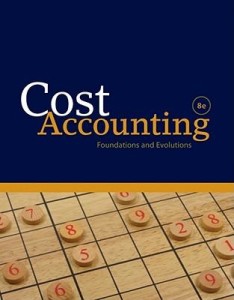
What is Cost:
Cost is forgoing measured in monetary term incurred to achieve a specific objective.
What is Cost Accounting:
Cost Accounting is branch of accounting also called “Managerial Accounting “which is used to check the efficiency of producing, selling and administrative department by applying applied and actual FOH techniques it help in management to control cost of production and distribution.
Cost Accounting is helpful in making a number of business decisions. By weighing the actual costs versus the anticipated benefit, it prevents the purchase of unnecessary goods and services. It evaluate the status of a department within the company or as a tool to project the feasibility of opening new locations or closing older ones.
Cost Accounting can provide important data that may impact the final decision.
What is difference between cost and expense?
Cost:
Cost is the amount invested in obtaining a product the benefit of which have not yet been received or consumed in connection with the realization of revenue.
Expense:
Expense is that part of cost the benefit of which have not yet been received or consumed in connection with the realization of revenue.
You May also Like to Read
Types of Cost: In Cost Accounting
The following types of cost are as follow:
1.Fixed cost:
When an item of expenditure remain the same regardless of the increase or decrease in the level of activity we refer to this as fixed cost.
Example: rent of a building, manager’s salary etc
2.Variable Cost:
Cost that change in proportion to sale are called variable cost.
Example: Fuel, machine oil, wages of labor etc
3.Semi Variable:
Semi variable costs are those which have both fixed cost and variable coast elements.
Example: manufacturer’s electricity bill, telephone bill,
Elements of Cost; In Cost Accounting:
The following elements of cost are as follow:
1.Direct cost:
It is that element of cost in which we include the cost of direct material and direct labor if we take it total it becomes prime cost.
a.Direct Material:
Cost include cost of material purchased. Direct material is that material which we find in finished product and easily measured its costs
Example: making furniture wood is direct material.
b. Direct Labor
Cost included wages of the labors. It is used for producing the product.
Example: we pay wages to labor for making product
Prime Cost = Direct material + Direct Labor
2. Direct Expense:
Except direct material cost and direct labor cost all expense will be direct expenses cost.
3.Indirect Cost:
The indirect cost includes the following
- Factory overhead cost(FOH):
When we can not charge an expense directly on product we can say it is indirect expense or overhead. In overhead we can include indirect material cost indirect labor cost and other following indirect expenses;
- Manufacturing overhead
- Administrative overhead
- Selling overhead
- Research and development cost.
- Factory rent and rate
- Insurance of plant
- Telephone bills
These are the main factory overhead cost.
